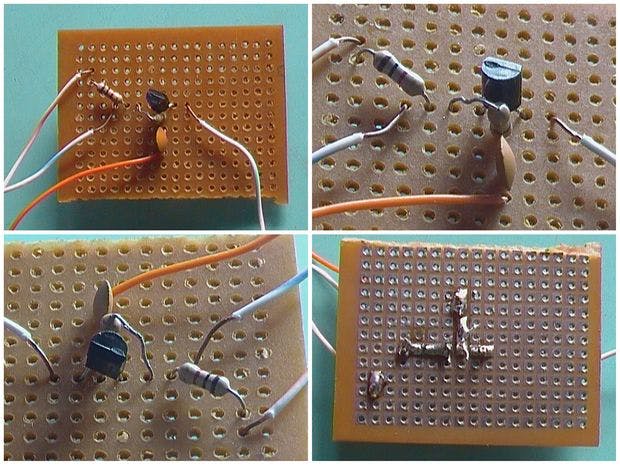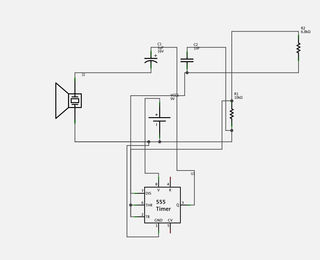Forget about the Critters! Scare them away with this high-frequency electronic repeller.
Many of the citizen scientists all around the world might have faced this problem that their sunflower or any other plant is eaten up by critters before it even fully grows, so I have come up with a very simple solution to this problem, expose the critters to high-frequency noise which they wouldn't be able to tolerate and will not get near your plant
This critter repellent is basically a high frequency emitter ( 61 Khz ) based on the 555 timer . The 555 Timer is a powerful chip for low cost projects by adjusting the values of components that you will be connecting to it you can make it emit various frequencies . The Timer in our circuit will function in astable mode which will put out a continuous stream of stream of rectangular pulses having a specified frequency.
This project will explain some basics of how it works, the parts needed, how to prototype the circuit on a breadboard, and finally soldering everything into place.
Parts & Tools
Utsource is an online platform for technicians, Makers, Enthusiasts, Kids to buy electronic components
Prototype The Circuit
This circuit is pretty straight forward. It consists of two resistors, two capacitors, a 555 Timer, a piezo buzzer, and a 9v battery.
The circuit works around the very versatile 555 timer IC, the values of the surrounding components are set in such a way that it produces a frequency of 61khz. They were calculated using the formula attached as the last image, if you find it difficult then you can use this calculator. The Timer in our circuit will function in astable mode which will put out a continuous stream of stream of rectangular pulses having a specified frequency. The circuit is pretty straight forward the 10 k resistor is connected to pin 7 and the other end to gnd, pin 8 is connected to +9v, pin 1 to -9v, pin 2 and pin 6 are connected together, 6.8k resistor is connected to pin 7 and its other end is connected to pin 6 , 1nf capacitor is connected to pin 6 and the other end to gnd, the buzzer is connected to pin 3 via a 1uf capacitor. The schematic is attached to the last image . It was made using Fritzing .
Testing The Circuit
To test the circuit you need a frequency counter or a oscilloscope you cannot just hear the sound and make out that if the circuit is working or not as the sound produced of high frequency and you cannot hear it . I did not have any frequency counter on hand so I made a quick and easy frequency counter using the Arduino you can find it here . Here are some screenshots of the frequencies that the circuit produces.
Soldering
Now that you have built the circuit on a breadboard and tested it lets make the circuit permanent and solder it.If you have no experience of soldering consult this guide.You should always use the lead free solder as leaded could be harmful.Maintain safety while ,soldering use gloves and safety glasses use proper stand to keep you soldering iron as it is very hot and can harm you. You can use single strand wire to make connections as I did . You will require a small piece of protoboard as this circuit is very small too . Use 8 pin DIP socket to keep your 555 Timer safe . As you can see in the pictures that I am not very good at soldering
Hope this project inspires further experimentation. The 555 Timer is extremely versatile and does not need many external components as other IC's do. This is just one of many simple projects which can be constructed using the 555 Timer. More projects coming up. For any inquiries leave a comment.





